
Garabakh Culture
The Armenians who have turned Karabakh into a land of tragedies for 200 years often falsify our history and oust Azerbaijanis from their native land. Armenian "historians", who have become a tool in the hands of so-called politicians, collect "facts which prove" that Karabakh belongs to Armenians, prepare "legal documents" and try to put a legitimate gloss on the seizure of territories by Armenians. Armenian ideologues and "archaeologists" are trying to present Karabakh's Albanian Christian monuments as "Armenian monuments" and to prove, using some ancient sources, that the area between the Kura and Araz rivers is totally an "ancient Armenian land", whereas until the 19th century, the Armenians had never lived not only in Karabakh, but even in the Caucasus, which is why this material culture cannot belong to them.
Samples of material culture and numismatic evidence discovered during archaeological research in Khankandi, Agdara, Khojavand and Shusha in Upper Karabakh, Barda, Tartar, Agdam, Agjabadi, Fizuli and Beylaqan in Lower Karabakh, as well as in Lachin and Kalbajar comprehensively reflect the ancient material culture of Karabakh, its ethnic-cultural situation, the socioeconomic condition of the population, its lifestyle and in general, the economic, public and cultural history of this part of Azerbaijan.
It is believed that a new alphabet was invented in Albania in the early 5th century and was used in official reports. In this regard, educational institutions were set up, and their main centre was the ancient Karabakh city of Barda. After the adoption of Christianity in Albania in the early Middle Ages (4th century), Albanian Christian religious monuments, which characterized the building culture of Karabakh in the 4th-7th centuries and represented an architectural style typical of Christian architecture, were created in the ancient Azerbaijani land of Karabakh. Amaras in Agdhara (this word means "White Hun" in the ancient Turkic language), Qovurqala in Agdam (a castle belonging to Albanian Christians), Albanian Christian temples in Qabala (Boyuk Amirli village), Lachin (Agoglan), Kalbajar (Hashavang (Khotavang), Chahartag), Zaqatala (Kilsadag, Mamrukh) and Qakh (Lakit), as well as the Khojavand Albanian church (Sos village), a basilica in the village of Tazakand in Agjabadi and an apsidal temple with three semicircles discovered in Barda characterize the architecture of the Karabakh region and its history and culture.
Unlike many regions not only in Azerbaijan, but also in many other countries, the Karabakh region has more ancient history. The Karabakh region is rich in historical material-cultural monuments, literature, arts and music.
Karabakh's artistic thought and creativity has been greatly influenced by the region's beautiful scenery and rich natural resources. Craftsmanship, which is related to the lifestyle and everyday life of the Karabakh people, plays an important role in their rich culture. Naturally, the particularities of the Karabakh people's lifestyle and aesthetic taste, in a word, their national vision and identity, manifest themselves especially graphically in this type of art. It is not in vain that we can find many wonderful pieces of Azerbaijani craftsmanship represented by Karabakh handicrafts in many museums around the world. When we look at the rich collections of London's Victoria and Albert, Paris' Louvre, Washington's Metropolitan museums and museums of Vienna, Rome, Berlin, Istanbul, Tehran and Cairo, we can see pieces of arts created by skillful craftsmen of Karabakh, as well as Tabriz, Nakhchivan, Ganja, Qazakh, Quba, Baku, Shaki and Shamakhi.
Karabakh handicrafts, which were created through the hard work of the Karabakh people and were widely used in the region, have a great and rich history. Dishes, weapons and jewels found in Karabakh represent not just a historical fact, but also a valuable source that testifies to the mastery of the craftsmen who created them. The historical, ethnographic and artistic particularities of the Karabakh craftsmanship are reflected in cloths. This particularity manifests itself in cloths and decorations of certain forms and in artistic embroidery and weaving. The discovery of a large number of pieces of material culture during archaeological excavations has made it possible to study the history of the material and spiritual culture of Karabakh. Every archaeological artifact discovered in Karabakh, in other words, every peace of material culture – construction materials, household items, dishes and jewels – is a reflection of the characteristic features, level and development of ancient culture, which played a role in the life of the Karabakh people, both in terms of production techniques and various glyptic pictures and patterns engraved on them.
Various pictures engraved on household items and jewels made from copper, bronze and gold prove that visual arts existed in Karabakh in ancient times. Carpets woven by Azerbaijan's Karabakh carpet-weaving school at different times still astonish people with their beauty. Many of them are kept at famous museums of the world.
This heritage was enriched with new trends from the middle of the 19th century. In this period, under the influence of growing Russian-Azerbaijani arts and cultural relations, Karabakh arts gradually underwent qualitative changes, resulting in new realist features appearing in national arts. For its richness and uniqueness, Karabakh culture has been, and will be, a leading and integral part of Azerbaijani culture. All this goes to show that Karabakh culture is the mirror of Azerbaijani culture.
Garabakh Horses
Karabakh horses of Azerbaijan are regarded as the oldest horse breed in Asia and the Caucasus. Researchers believe that Karabakh horses hail from Manna, Media, Atropatena and Albanian horses. Karabakh horses are 148.5 cm in height and 165.8 cm in width, while the wrist is 18.3 cm in cicle. They are mainly golden-redheaded and bay horses. Since 1946, pedigree stock-breeding has been carried out at the Agdam horse-breeding farm.
Although Karabakh horses have undergone some changes due to their interbreeding with Roman, Sassanid, Arab, Seljuk, Mongol, Iranian and other horses, they have maintained their real roots. The breed of Karabakh horses greatly improved in the 18th-19th centuries. Karabakh horses had a great impact on horse-breeding in Turkey, Iran, Georgia, the North Caucasus, Russia, Kazakhstan and Western Europe.
"The Book on Horses" says that modern Don horses are indebted to Karabakh horses for their golden colour. Karabakh horses have won prizes and awards at several international exhibitions and contests. Karabakh horses have participated in and repeatedly won contests under the names of Meymun, Tokhmakh, Agalar, Bayram, Zaman, Qaragozlu, Qavqaz Gozali, etc.
Karabakh horses have a special position among Arab, Don and Budenny horse breeds. Karabakh horses walk at a speed of 8 km per hour
From typical natures of Karabakh horses these signs in particular, draw attention:
• First of all, entire parts of the body, which is typical of mountain horses are in harmonic and close relation, in addition the head is proportional to the neck and strong back of the head, strength of hoofs, straight form of back and feeling of saddle-place, the small neck, the ability to balance the gravity center at actions, and ability to stop by changing the position of body at any moment even during the speedy run;
• the shiny, eye-dazzling and fine color of hairs, the thin and dry skin, having sanguine(ous)–choleric temperament, inclination to catch cold etc, all these showing that the horse is of southern origin;
• the pure blood of horse and closeness to owner at obeying level, meaningful vision, appearance of kind senses in its behavior etc;
3 types of horses were kept at khan plants of Karabakh: Maymun and Qarniyirtiq, Eliyetmez . Meymun sort of horses besides being durable to long distance run, were calm, prone to jumping height. Qarniyirtiq sort of horses were very nice, with high stand, tall neck, and were weaker than Meymun sort for strength and durability. Eliyetməz (Gazelle) sort was successive at short-distance race, with gazelle like jumps and beautiful and playful body structure. In addition, horse breeders preferred Tokhmaq sort, too. These horses were relatively of large body, with yellow-gold color, with dark bay color of mane and feet.
After assaults of Armenia to Karabakh region of Azerbaijan the Aghdam stud was occupied by aggressors in August 1993. When Armenian troops entered the territory of region the object that interested them most was stud. However, the wishes of the Armenians could not be achieved, horse riders managed to take out Karabakh horses from battles areas.
Karabakh horses taken away from battle areas were temporarily accommodated at initial period at Yevlakh "Aran" sheep-breeding farms. But as natural conditions of these places are not suitable to the Karabakh horses were moved to Lanbaran winter quarters in Agjabedi region.
Adapted to adverse conditions during the last years but reserved the characteristic features of breed a new generation of Karabakh horses were grown.
Kharibulbul (Ophrys Caucasica)
Harı Bulbul is the rare endemic type of plant of Azerbaijan. It is mainly found in the territory of Karabakh. It is distinguished with special beauty. It is a symbol of Karabakh, in particular of Shusha.
There are other names of hari bulbul - Caucasian qash Sahlabi. It is the perennial plant reproduced with seeds. It belongs to Haribulbul orchids (latin: Orchidaceae) class, ofphis (lat. Ophrys) kind. Ophrys kind has more than 50 species and many of them are available in different regions of Azerbaijan and in general in the Caucasus and Transcaucasia. The rest grows in Turkey, Greece, the Crimea and other places.
The plant as we called Haribulbul in Latin called as Ophrys Caucasica or Ophrys Mammosa. Ophrys is word of Greek origin, and means "jewel" . Orphyses like many orchids depends on symbiotic fungus existing jointly in root tissue and required for plant. Therefore, these plants can not be planted in other places - they will be destroyed. Pollination of ophrys takes place with the help of shining winged insects and its flowers repeat the form and appearance of the insects attracts them. Depending of fungus and certain types of insects makes ophrys very sensitive to environmental changes. Therefore, these plants are considered rare plants. They are preserved by the state. Haribulbul (Ophrys Caucasica) and many other types of Ophrys even have been included in the Red Book.
Rivers
Rivers taking their sources from the Karabakh territory flow into the rivers Kur and Araz or the rivers mostly concerning to their basin. High tops of the mountains located here form watershed between the Kur and the Araz. Rivers there are mainly fed with rain or snow-waters and are used for irrigation. The Tartar and the Hakari rivers take their sources from volcanic plateau. The Arpachay (128 km.) and the Bazarchay (178km.) sources are in the north-west of the plateau. These rivers are mostly fed with rain, ground waters or underground waters. Therefore they overflow in hot months of the year. The Tartarchay, the Hachinchay, the Gargarchay, the Hakarichay, the Okhchuchay assume great importance in irrigating of Mil and Karabakh plains.
The Tartarchay takes its source from the region of Kalbajar. It flows through Agdara, Tartar, and Barda regions and flows into the Kur. The branches of the river are: the Tutgu, the Lev, the Ayrim rivers. The difference between the height of the source and mouth of the river is 3117 metres. Sarsang Water Reservoir has been built over the river.
The Hachinchay beginning from the region of Kalbajar and running through Agdam, Tartar and Barda regions flows into the river Kur. The total length is 119 km-s. The height difference between its source and mouth is 2900 m.
The Kondalanchay takes its source from the territory of Shusha region, runs through Hojavend and Fizuli regions, flows into the Araz River. Being the left branch of the Araz its length is 102 km. The height difference between its source and mouth is 1780 m.
The Bargushad River takes its source from the Republic of Armenia, runs through Kalbajar, Gubadli and Zangilan regions and flows into the river Araz. Being the left branch of the Araz its length is 164 km. Agha Bakhiyarli and Davudlu small rivers join it in Gubadli region. The river is polluted due to waste and industrial waters poured here from big settlements located around the river (in the territory of Armenia). River pollution in the territory of Armenia has caused the fish in the river to die out. In most cases fishes are killed en masse by chemicals.
Taking its source from the 3080m height of the region Lachin the Hakari river runs through the regions of Gubadli and Zangilan. Being the left branch of the river Araz its length is 128 km. The height difference between the source and mouth is 2812m. Its water is used for the purpose of irrigation and drinking. Valuable fishes like farel, omul and others spawn in this river.
Taking its source from the Zangilan mountain range (Gapijik Mountain) the Okhchuchay runs through the territory of Zangilan region. Being the left branch of the river Araz its length is 85 km.
Waste waters from Gajaran copper–molybdenum factory, Gafan copper ore refinery in the territory of Republic of Armenia and biological sewerage of Gafan-Gajaran cities (including of villages, hospitals, agricultural objects) flow in Okhchuchay in front of Sharikan village in the territory of Azerbaijan without purification, which made the river basin “dead zone”.
The Basitchay takes its source from the Pepublic of Armenia and flows into the river Araz. The length of the river is 44 km (17 km belongs to Azerbaijan territory). The river is polluted with the pig farm garbages of the mountain villages of Armenia.
The Gargar River takes its beginning from the 2080 m height in Shusha and runs through Khankendi, Khojali, Agdam and Aghjabedi territories. Joining of the Khalfali and Zarisli rivers forms the river Qarqar. The height difference between its source and mouth is 2080 m. The major branches are: the Ballija, the Badara, the Dagdaga, etc.
The Chaylagchay is the left branch of the river Araz. The river flows through the territory of Jabrayil region. Its length is 32 meter. It takes beginning from the south foot of the Small Caucasus (1750 m). It is fed with rain-water. As the Chaylagchay is widely used for irrigation the river doesn’t reach its mouth.
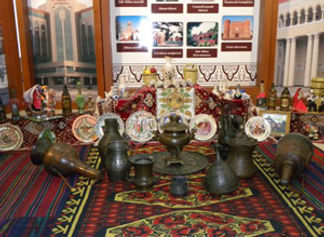

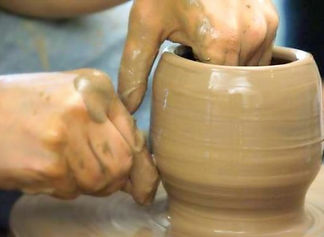
 |  |  |  |
|---|---|---|---|
 |  |  |  |
 |

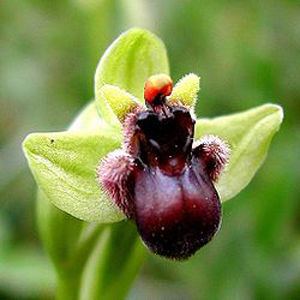

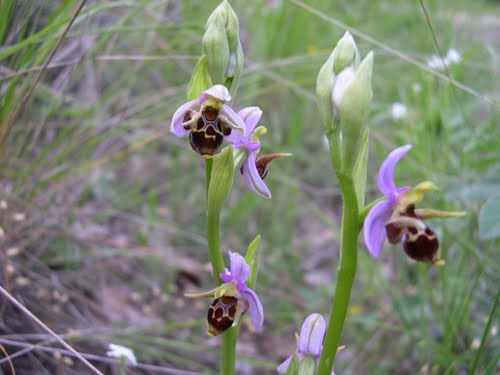






 |
|---|
 |
 |
 |
 |
 |
 |
 |
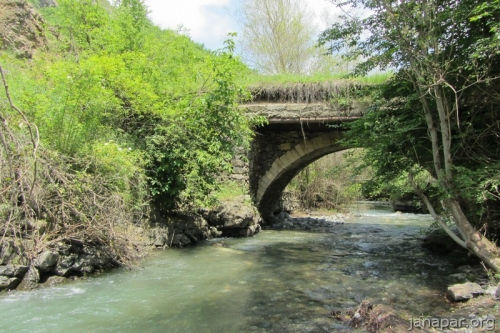
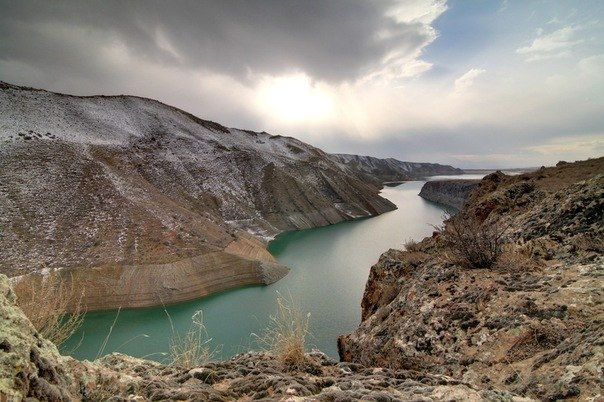


Administrative Division Culture and Nature
Folk Craftmanship Armenian Terror
Conflict in UN Garabagh Conflict
Site map
